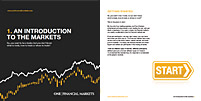

Market experts share 4 ways to make money on rising gold prices
Since the start of the year, gold has risen 12.8% in US dollar terms, outperforming the S&P 500 by 2.8%, the MSCI World Index by 4.3%, and long-dated US Treasuries by 20.4%. In a recent note, a financial research firm outlined four ways investors can gain exposure to rising gold prices.
Gold prices rally
Earlier in 2024, gold prices surged to new record levels, with the yellow metal surpassing $2,400 an ounce last month.
A key factor behind this rally is the strong demand for gold from global central banks and Asian households.
Following its recent trip to China, UBS strategists noted prevailing optimism towards gold in the world’s second-biggest economy, despite concerns about its rapid price increase and the breakdown of macro correlations.
Market participants in China, like their global counterparts, are curious about the drivers of gold-buying activity.
In the near term, Chinese investors generally view any dips in gold prices as buying opportunities. While there is medium to long-term optimism for gold prices, many anticipate a period of consolidation in the short run.
This pause could reinvigorate physical demand, which has recently slowed, and allow speculative interest to recalibrate.
Similar to China, other emerging markets (EMs) are also showing strong interest in bullion.
Nearly all physical gold purchases come from emerging economies, with approximately 30% of global purchases in Greater China, 25% in Greater India, 20% in the broader Middle East, and around 10% in Russia and the Commonwealth of Independent States.
This demand is likely due to cultural biases and a lack of trust in local governments, the rule of law, or domestic financial institutions. As a result, gold becomes a natural destination for savings in these economies.
This trend explains why gold prices tend to rise when EMs perform well and decline when entrepreneurs in these regions struggle.
How to get exposure to rising gold prices
In contrast to their Asian counterparts, European and American investors have yet to significantly participate in the gold bull market,
However, if they decide to join in, identifying the marginal seller of gold could become challenging, particularly if growth in emerging markets continues to thrive, analysts at Gavekal Research pointed out in a recent note.
For investors seeking to capitalize on this potential scenario, the financial services firm suggested four ways to gain exposure to rising gold prices.
1) ‘Hold the metal outright: “This is simple, clean, liquid and likely holds few negative surprises,” Gavekal analysts noted.
2) ‘Buy gold royalty companies:’ According to Gavekal, these companies tend to offer a lower beta to changes in the gold price and often trade at high valuations.
3) ‘Buy precious metal miners:’ After a decade of underperformance, these stocks are attractively valued and under-owned. However, there are several issues to consider here, as highlighted by Gavekal’s analysts.
Despite investing billions over the past decade, miners have not found significant amounts of gold. Moreover, gold mining is an energy-intensive business, and rising energy prices could impact earnings.
“Also, a lot of gold mining takes place in areas of the world where property rights can be “flexible” and as the gold price rises, the temptation for governments in places like Mali or the Democratic Republic of the Congo to nationalize mines can run strong,” they continued.
4) ‘Buy brokers and money managers specialized in precious metals:’ These companies profit from rising volumes rather than prices, although in a typical bull market, volumes tend to rise with prices.
“So far, across developed markets (ex-Japan), we have seen rising gold prices, but not yet rising volumes. If this is the next step of the gold bull market, this part of the market may well thrive,” Gavekal’s team said.
Begin trading today! Create an account by completing our form
Privacy Notice
At One Financial Markets we are committed to safeguarding your privacy.
Please see our Privacy Policy for details about what information is collected from you and why it is collected. We do not sell your information or use it other than as described in the Policy.
Please note that it is in our legitimate business interest to send you certain marketing emails from time to time. However, if you would prefer not to receive these you can opt-out by ticking the box below.
Alternatively, you can use the unsubscribe link at the bottom of the Demo account confirmation email or any subsequent emails we send.
By completing the form and downloading the platform you agree with the use of your personal information as detailed in the Policy.






